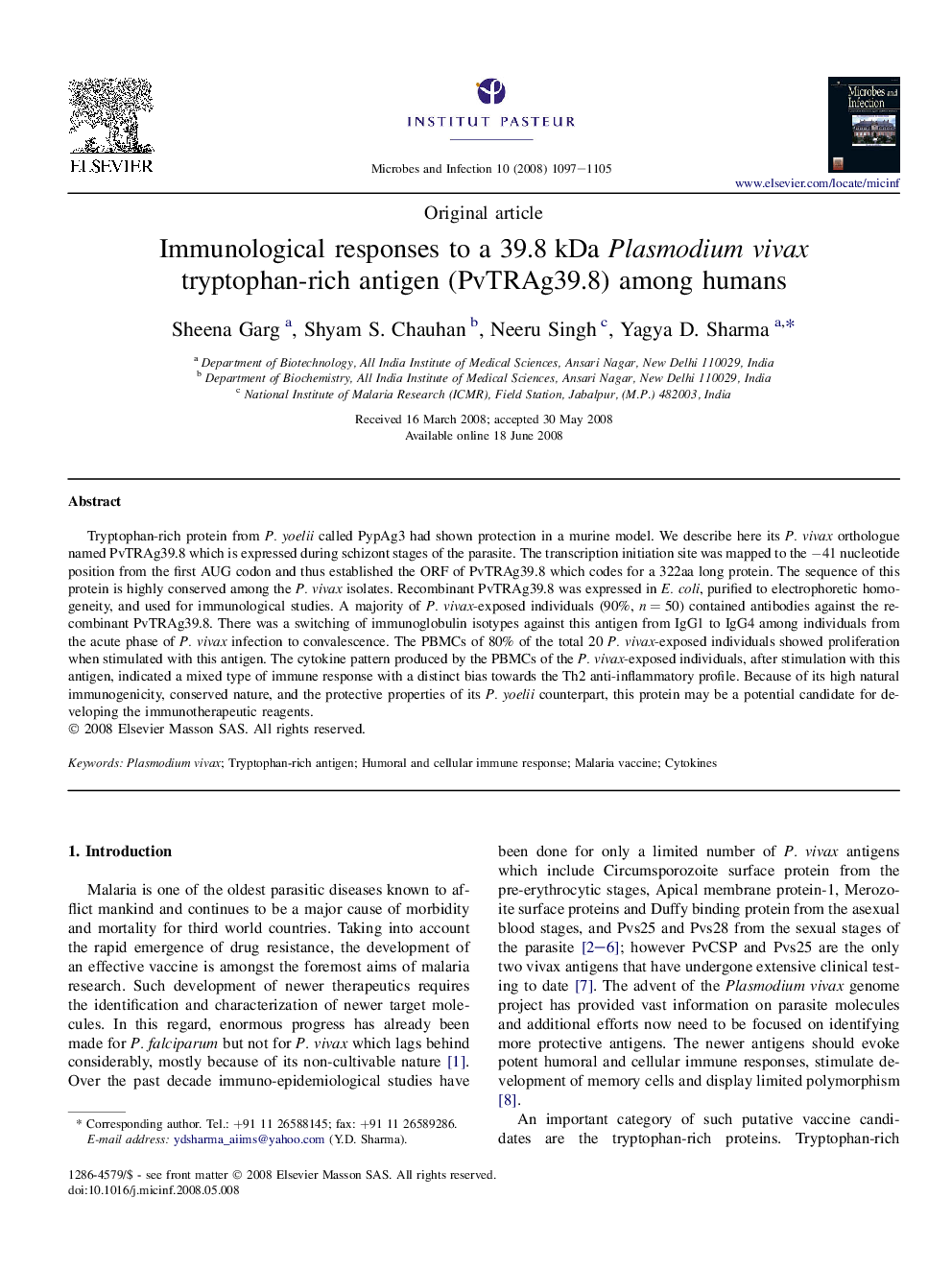| Article ID | Journal | Published Year | Pages | File Type |
|---|---|---|---|---|
| 3415670 | Microbes and Infection | 2008 | 9 Pages |
Tryptophan-rich protein from P. yoelii called PypAg3 had shown protection in a murine model. We describe here its P. vivax orthologue named PvTRAg39.8 which is expressed during schizont stages of the parasite. The transcription initiation site was mapped to the −41 nucleotide position from the first AUG codon and thus established the ORF of PvTRAg39.8 which codes for a 322aa long protein. The sequence of this protein is highly conserved among the P. vivax isolates. Recombinant PvTRAg39.8 was expressed in E. coli, purified to electrophoretic homogeneity, and used for immunological studies. A majority of P. vivax-exposed individuals (90%, n = 50) contained antibodies against the recombinant PvTRAg39.8. There was a switching of immunoglobulin isotypes against this antigen from IgG1 to IgG4 among individuals from the acute phase of P. vivax infection to convalescence. The PBMCs of 80% of the total 20 P. vivax-exposed individuals showed proliferation when stimulated with this antigen. The cytokine pattern produced by the PBMCs of the P. vivax-exposed individuals, after stimulation with this antigen, indicated a mixed type of immune response with a distinct bias towards the Th2 anti-inflammatory profile. Because of its high natural immunogenicity, conserved nature, and the protective properties of its P. yoelii counterpart, this protein may be a potential candidate for developing the immunotherapeutic reagents.
